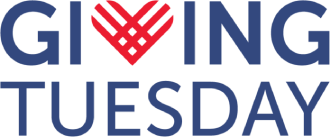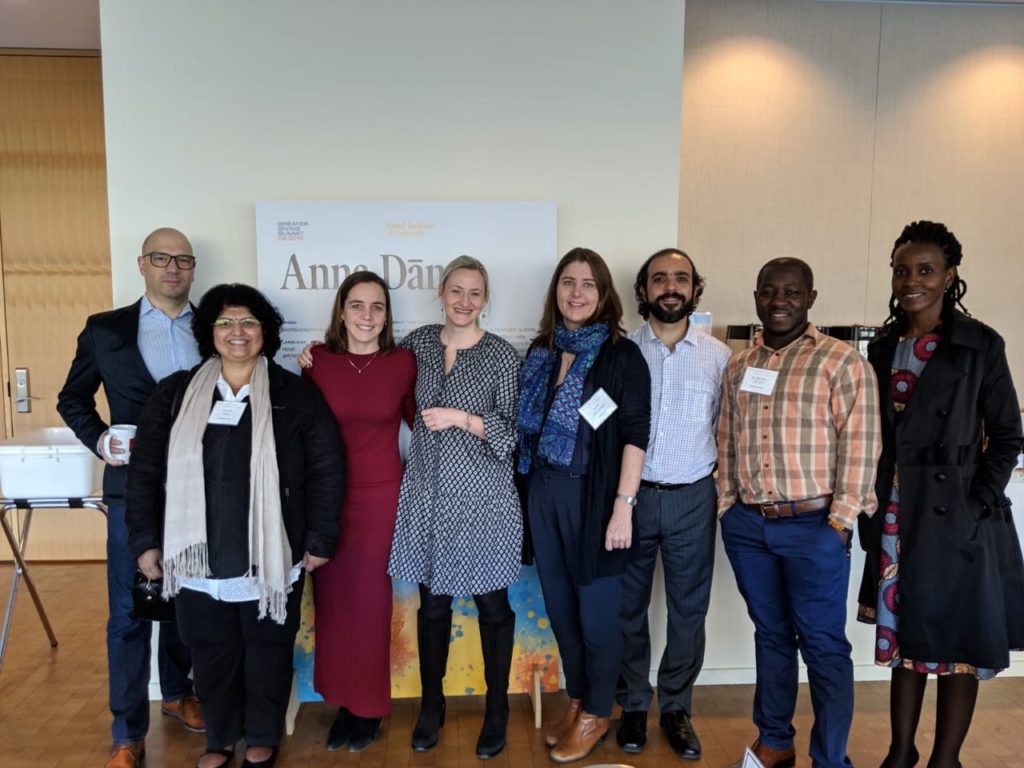As Nonprofits Head into Busy Year-End Fundraising Time, Latest Data Show Donors Are Still Highly Motivated to Give
Fundraising through the first three quarters of the year kept up with the impressive levels from 2020, and trends for donors, dollars and retention have largely remained stable compared to last quarter, according to the Fundraising Effectiveness Project’s 2021 Third Quarter Fundraising Report.
The Fundraising Effectiveness Project (FEP) is a collaboration among fundraising data providers, researchers, analysts, associations, and consultants to empower the sector to track and evaluate trends in giving. The project offers one of the only views of the current year’s fundraising data in aggregate to provide the most recent trends for guiding nonprofit fundraising and donor engagement.
The FEP is administered by the Association of Fundraising Professionals (AFP) Foundation for Philanthropy in collaboration with GivingTuesday. The project releases quarterly findings on those giving trends, released both via downloadable reports at http://afpglobal.org/fep and in a free online dashboard available at http://data.givingtuesday.org/fep-report.
The 2021 Third Quarter Fundraising Report compares giving data from January through September of 2021 with figures from the same time period in 2020.
The most important finding for charities and fundraisers? Giving in 2021 is mostly keeping pace with 2020 levels, with a slight decrease in the number of donors. The estimated number of donors decreased by 1.7% through Q3 of 2021 compared to the same period in 2020, while the total amount in donations has increased by a projected 1.4%.
“While those figures may not seem like much, we have to remember that giving grew significantly in the first quarter of the year, by more than 6%, while the number of donors grew by 10%,” said Lori Gusdorf, CAE, executive vice president for the AFP Foundations for Philanthropy. “We’ve been waiting for the other shoe to drop, so to speak, when giving would plummet back to typical rates, but that didn’t happen in the second quarter and not for the third quarter either. Growth rates have remained flat, which means giving is still happening, very generally on that very high level set in in the first quarter. That’s a really good sign for fundraising and charitable giving in the all-important fourth quarter when most charities see a large percentage of their yearly giving occur.”
Other key findings from the report include:
- The impact of larger-dollar donors grew in Q3. In terms of number of gifts, all donor sizes experienced year over year (YOY) declines in the third quarter, but mid-size ($500 – $5K) and major ($5K – $50K) donors showed less decline than other size ranges. Similarly, when looking at total dollars donated, all categories declined, but mid-size and supersize (more than $50K) showed the least declines.
- The most engaged donors are showing up and supporting their favorite causes. The number of donors who give once or twice a year is down compared to 2020, but stable since the second quarter of this year. However, the most frequent donors, donors who make seven or more gifts per year, make up a larger share of donors in Q3, up from 2.5% last quarter.
- Fundraising by size and cause remains similar to Q2 2021, indicating a return back to pre-pandemic “normal” patterns. Smaller organizations are fundraising more strongly in 2021 vs 2020, while larger organizations are fundraising less strongly in 2021 vs 2020. In addition, arts, culture and humanities; education; and environment and animal categories are all seeing increased fundraising as other causes saw decreases.
“Solid fundraising results through the third quarter of the year is a reassuring sign in the lead up to what was another record-breaking GivingTuesday. Our hope is that this has set the stage for a strong end of year,” said Woodrow Rosenbaum, chief data officer at GivingTuesday. “Overall, trends remain volatile and enthusiastic engagement of donors through the end of December is key to sector success.”
Donor Retention
One of the most important aspects of the FEP data is donor retention, the percentage of donors who gave in one year to a charity and then give again to the same charity in the next year. In general, retention rates have dropped significantly in 2021, with the overall retention rate down 7.2% so far in 2021 compared to 2020.
However, the new donor retention rate (the percentage of donors who gave to a new charity last year and gave to the same charity this year) increased in the third quarter, with the YOY increase at 1.9%. This increase is likely due to new donors and donors who shifted their giving to COVID-related causes in 2020 and continue to support those causes in 2021.
“Retention is so important now because in some ways, the pandemic created a whole new giving environment, however brief it might be,” said Jay Love, chief relationship officer with Bloomerang. “So, the key for COVID- and health-related charities is, can they keep the new donors they attracted last year? Newly retained donors showed a 15% increase year over year in dollars donated, while other donor groups saw declines during the same period. That’s extraordinary, and because it’s less expensive to keep current donors than attract new ones, retention is a critical factor for all charities.”
Another reason for the drop in retention may be because a larger number of organizations dropped out of the FEP panel study in 2021 because of the pandemic’s impact on their fundraising. To ensure appropriate methodology and analysis, the FEP requires each participating charity to have a minimum number of donors and certain level of funds raised. While some churn happens every year, the pandemic’s impact on the economy did force more charities to drop out of the analysis for 2021, which may affect overall retention rates for the year.
Guidance and Looking Ahead
While much of the world faces a new surge of the COVID-19 pandemic, the FEP report shows opportunities that fundraisers and charities can leverage to inspire more giving in 2021 while mitigating risk in a continuing period uncertainty.
“Despite all of the challenges that charities face now—and they are considerable—the silver lining is that the FEP data shows that people continue to give and want to engage in their communities,” said Tim Sarrantonio, director of corporate brand for Neon One. “The new donor figures say it all—when people are inspired and understand the difference they can make, they will give. Fundraisers and charities need to talk about the impact they make, and not just in the programs and services they provide. This is a period of uncertainty and inconsistency, and charities can serve as an anchor, a north star, to bring the community together, ease fears and help people focus on common goals. That’s so critical right now.”
The organizations involved in the FEP are dedicated to helping charities and fundraisers navigate these turbulent times, and continue to add more data, more precision and more depth to each report. Not only does the FEP provide data to help charities identify sector-wide trends and patterns, but the FEP website also offers tools and resources to help organizations benchmark and analyze their own data.
“If we don’t understand the big picture and what’s happening across the sector, we won’t understand how to improve our fundraising or shift our efforts when needed,” said Jon Biedermann, chair of the Fundraising Effectiveness Project and president and CEO of The Biedermann Group. “The FEP is so helpful for fundraising in that regard, but it’s only possible because of the incredible data we get through our fundraising software data providers, and in turn, through the charities that participate. I encourage every charity to talk with their fundraising software firms, and with the FEP, about how they can add their information to the FEP database so we can continue to provide the most accurate, up-to-date trends and data for the sector.”
About the Report
The FEP 2021 Third Quarter Fundraising Report is available for free download at http://afpglobal.org/fep with a free online dashboard available at http://data.givingtuesday.org/fep-report.
The data analysis includes giving details from 9,618 nonprofit organizations based in the U.S. as a subset of the Fundraising Effectiveness Project. The FEP’s database of organizations is made up of organizations that raise between $5,000 and $25 million.
In 2021, the FEP implemented a number of methodology changes to provide a better representation of the ‘typical’ experience of organizations and granular trends in donation patterns.
* * *
The Fundraising Effectiveness Project
The Fundraising Effectiveness Project publishes quarterly and annual reports that examine key fundraising metrics, serving as a benchmark for nonprofit executives, development staff and researchers. The Fundraising Effectiveness Project and the Growth in Giving database are both administered by the Association of Fundraising Professionals Foundation for Philanthropy in collaboration with GivingTuesday.
The Growth in Giving database is the world’s largest public record of donation activity, with more than 204 million donation transactions, and is continuously updated by leading fundraising software thought leaders (in alphabetical order) Bloomerang, DonorPerfect, Keela, and Neon One. Additional partners include The Biedermann Group, DataLake Nonprofit Research, and DonorTrends (a division of EveryAction). For more information and how you or your fundraising software provider can participate, please visit http://afpglobal.org/fep.



